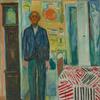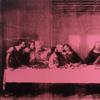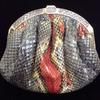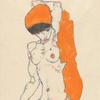'UNDER THE CUBAN SUN' Iconic photographs of Cuba from 1933 to 2007 at Throckmorton Fine Art
- NEW YORK, New York
- /
- May 04, 2016
“UNDER THE CUBAN SUN”
Iconic photographs from 1933 to 2007
Capture the tumultuous changes in Cuba’s iconography and culture
at Throckmorton Fine Art
June 11 – September 17, 2016
“What is so moving in these 42 photographic images is how the consequences of each period of political upheaval in Cuba, -- from the 1930s dictatorship to the 1960s Revolution to its abandonment by the Soviet Union in the 1990s – wrought a different focus to the photographers who used their genius to capture the souls and resiliency of the Cuban people. Too often the world has seen only the crumbling Cuban’s cities and decaying automobiles, rather than the personalities and souls of the populous, not just in Havana but in its desperate rural outposts. Now we see seven decades that portray the real heart of the Cuban people.” -- -Spencer Throckmorton
Throckmorton Fine Art has announced a special show of 42 vintage photographic images of Cuba created over a seven decade period beginning in the 1930s by renowned artists, to be staged at its New York gallery from June 11 – September 17, 2016.
“UNDER THE CUBAN SUN” is what Spencer Throckmorton has titled the show. He says, “What is so moving in these 42 photographic images is how the consequences of each period of political upheaval in Cuba, -- from the 1930s dictatorship to the 1960s Revolution to its abandonment by the Soviet Union in the 1990s -- wrought a different focus to the photographers who used their genius to capture the souls and resiliency of the Cuban people. Too often the world has seen only Cuba’s crumbling cities and decaying automobiles, rather than the personalities and populous, not just in Havana but in its desperate rural outposts. Now we see seven decades that portray the real heart of the Cuban people.”
He adds that it is important to cast a spotlight on vintage images created by pioneering photographers who found ways to visit the island of Cuba over the past half century despite the restrictions. Among these are many Latin American photographers Throckmorton Fine Art has shown and published over the past two decades in its New York gallery.
“This week the first American cruise ship entered the port of Havana in over four decades, a striking example of the new relationship being ever so tentatively pursued by the communist government of Cuba and the United States. In the half century since Fidel Castro took power few people would have believed such an event could occur in their lifetimes. With controls being lifted on island visits, more and more people are expected to make the trip, following in the footsteps of the select few who found a way, either working as photo-journalists, or by other means, to go to the island to photograph the Cuban people, its landscapes and the many changes the island has endured in the past seventy years.”
Among photographers and images represented in this show, visitors to the Throckmorton gallery will see iconic portraits of Fidel Castro taken by Jesse A. Fernandez, Alberto Korda, Leo Matiz, and Liborio Noval, of Castro with Pope John Paul II in 1998; and the well-known images of Ernesto “Che” Guevara by Hector Garcia and Rodrigo Moya. Noval, who died in 2012, spent 50 years photographing Fidel Castro who deftly employed photographic images as a tool in his propaganda arsenal. He credited these images with shaping the Cuban, and world, view of the significance of the revolutionary movement. When he allowed photographers to accompany him on visits to the mountains where the rebels began their campaign he saw it as a way of reinforcing the public’s appreciation of what the forces did to change the Cuban experience.
The earliest images of Cuba in this exhibition were taken in 1933 by Walker Evans, who is best known for his images of American life in the 1930s. Describing himself as a “transcendent documentarian,” Evans was asked by the publishing company J.B. Lippincott to produce photographs of Cuba for a book by a firebrand journalist, Carleton Beals, “The Crime of Cuba.” It vigorously attacked the regime of then dictator Gerardo Machado, who was, in fact, forced from office shortly after Evans visited Cuba. Evans is credited with using some innovative photographic techniques during this assignment, creating both wide angle and close-up compositions that he combined in rapid sequence to better express his reaction to what he termed “a revolution” and the subsequent havoc it produced.
From 1933 to the Socialist Revolution Castro successfully engineered in 1959 the Cuban people’s frustration with the ongoing power struggle grew until it ended with the fall of the Batista regime and the emergence of the Soviet Union as a key supporter of Castro’s newly declared Socialist regime.
Jesse A. Fernandez (1925-1986) was distinctive among Cuban photographic artists for capturing in portraits of the 1950s the passion and ferocity of the Cuban people during this time. His portraits of Fidel Castro and Wilfredo Lam are featured in the Throckmorton show.
“Most of us have seen images conveying the harsh realities of everyday life in Cuba since the US embargo began in the 60s, and especially once Soviet support for the Castro regime evaporated as the Cold War ended in the 1990s,” Throckmorton states. “Poverty and deprivation worsened, particularly in the rural areas, and the inability of Cuba to trade with the US caused great hardships for individual Cubans, who were also restricted from leaving the island. Everyone has heard of the dangerous voyages Cubans took to cross the strait to get to America, and how many died in the process.”
Throckmorton is also showing a series of photos taken in the 1960s by Henri Cartier-Bresson and Venancio Diaz’s portraying memorable images of combatants in the 1959 uprising. Cartier-Bresson made his second visit to Cuba on assignment for Life magazine in 1963. The images here show the main plaza in Bayamo, and arcades and modern stores in Holguin, both in Providence Oriente, as well as peddlers with mangoes on a Santiago street. Venancio Diaz is represented with a 1959 photograph “Entrada de la Rebeldes, en la Habana,” with rebel firearms raised at the height of the revolution.
Michael Scalisi’s images of 1993-94 capture Havana’s post-Revolution street life, showing decaying automobiles with distinctive 50s-style tail fins, children playing stick ball in the street, and the city’s skyline. Scalisi came to New York to act but changed course at the suggestion of his mentor, legendary photographer Bruce Weber. Scalisi spent a year in Cuba using a $38. Olympus camera he had bought at Weber’s suggestion. Nancy Stout also visited Cuba in the mid-90s, shooting Cuban churches and the Paseo de Prado in Havana. Jose Antonio Carrera’s “Jinetera in La Habana” from 1992 captures both the resignation and fatigue of the Cuban people.
A portfolio of eight Cuban images taken by Mario Algaze in 2000 center on the people, villages and coastal landscapes of Cuba 40 years after the Communist regime took power. Algaze left his native Cuba at 13 for the US and did not return to the island until 40 years later. He reflected on leaving a political revolution at a time a cultural revolution was underway in the US. He has said he never really felt a sense of belonging in the US and that it was only when he returned to Cuba and smelled the aroma of the ocean there that he realized the lasting imprint his early years in Cuba had on his psyche. Cuba’s seaweed has a distinct aroma from being caught in coral reef there, something Algaze had never sensed at Miami beaches.
Contemporary Cuban photographer Juan Carlos Alum also shot Cuba soon after the turn of the century, as did Raul Canibano, a gifted storyteller who began life as a Cuban welder and at age 30 found his passion in photography. He has been particularly skilled shooting Cuban rural villages and portraying the special challenges ageing Cubans face. Alum, also an experimental filmmaker, created haunting portraits and still life images. The people in the streets of Havana also captured the imagination of photographer Christophe Von Hohenberg who in 2000 spent time shooting Cubans in the capital.
Throckmorton Fine Art has earned a reputation over the past two decades promoting contemporary Latin American photography largely created by artists who were born there or spent time in residence. Among the best known artists represented by the gallery in its shows and publications you’ll find Tina Modotti, Flor Garduno, Christian Cravo, Mario Algaze, Lola Alvarez Bravo, Manuel Alvarez Bravo, Hector Garcia, Cristina Kahlo, Graciela Iturbide, Leo Matiz, Javier Silva Meinel, Rodrigo Moya, Nickolas Muray, Mario Cravo Neto, Luis Gonzalez Palma, Lucien Clergue, Colette Urbajtel, and Edward Weston.
Throckmorton Fine Art is the premier dealer offering vintage and contemporary Latin American photography, Pre-Columbian art, Chinese jades and Tribal art. The gallery participates in internationally acclaimed fairs, including The Winter Antiques Show in New York each January, The Photography Show (AIPAD) in April, and during March, offering ancient artifacts and Chinese Jades during ASIA WEEK. The gallery’s commitment to connoisseurship is underscored by its sales to such major museums as The Museum of Modern Art, The Metropolitan Museum of Art, The Getty and The Museum of Fine Arts, Houston, along with the Reina Sofia in Madrid. Portions of collections the gallery was instrumental in forming have been donated to the Louvre. The gallery loans examples on a regular basis to such significant institutions as the National Gallery in London.















